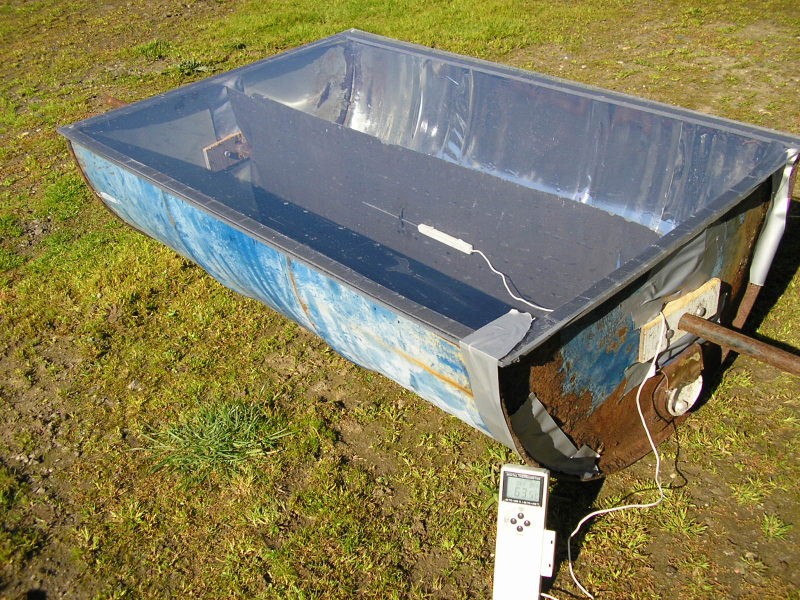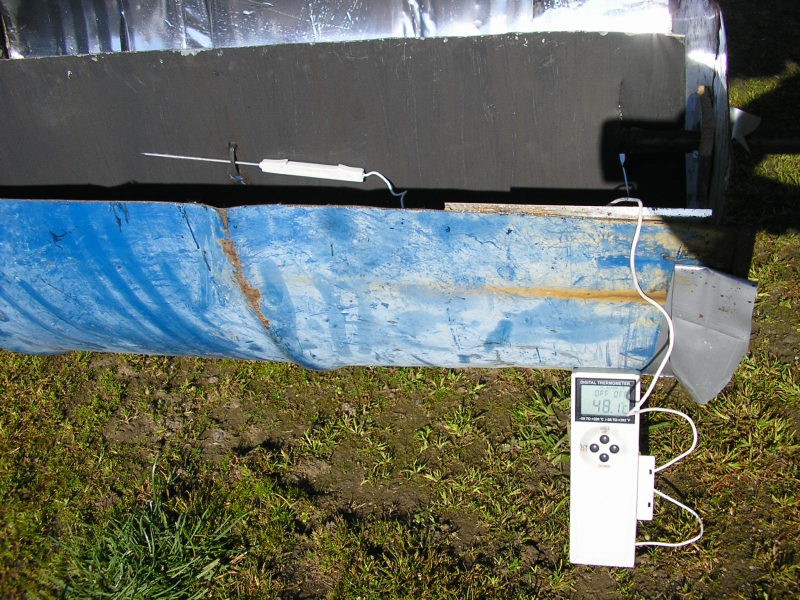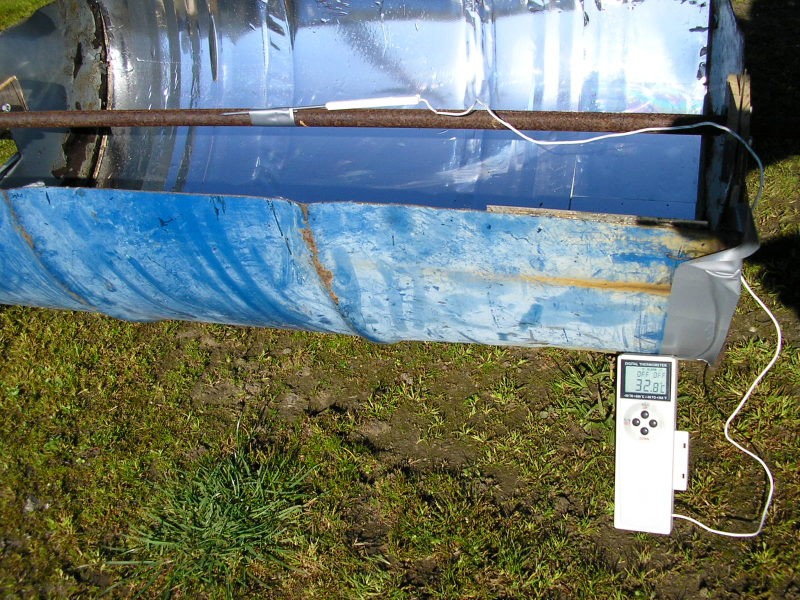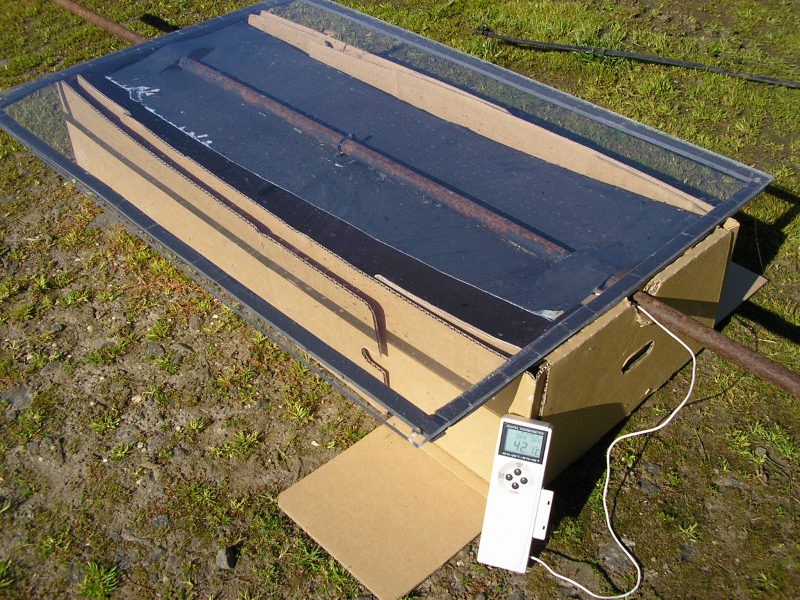Well it's been a while but I have still been tinkering when time and less-wintery weather have coincided.
I eventually got myself a decent piece of perspex and sealing the solar concentrator up with that makes a significant improvement. On a clear winter day at an ambient temperature of around 13degC in the shade, the collector temperature got up to 63.5degC (50.5degC rise). That's definitely the best performance yet.

At that point it was worth comparing all of the configurations that I've come up with so far:
- Rectangular collector panel (vertical), no perspex: peak 48.1degC (35.1degC rise)
- Bare pipe, no perspex: peak 32.8degC (19.8degC rise)
- Rectangular collector panel (horizontal) in cardboard box with perspex: 42.1degC (29.1degC rise)
So the latest (and most complex/expensive) arrangement with the rectangular collector panel vertically orientated in the semicircular reflector, all sealed up under a perspex window, is definitely the best by a good margin. It also protects the chrome vinyl wrap.
These tests are pictured below. All four tests were conducted within the space of an hour under clear sky.



But the cost of the perspex is a but prohibitive for making lots of these. New sheets are over $100 for sure and it isn't the sort of thing that seems easy to find used. Glass may be easier to find cheaply, but more difficult to work with.
Even lots of used glass can be tricky to find, but I did find someone selling solar collectors from an old home solar hot-water system made in 2011. So for $75 I picked them up and if nothing else it might be educational to pull one apart, as well as to try comparing performance once I move to actually trying to heat water. Unfortunately they aren't the sort with the evacuated tubes, though those never seem to be a length that suits the height of these steel drums anyway.
Discussions
Become a Hackaday.io Member
Create an account to leave a comment. Already have an account? Log In.